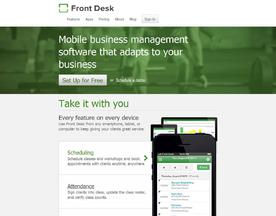How to buy a business with no money ? Explore creative financing like seller financing, partnerships, or lease options to acquire a business without upfront capital.
Buying a business can be a costly venture, and for many aspiring entrepreneurs, the idea of how to buy a business with no money down seems like an impossible feat. However, with the right strategy and approach, it is possible to acquire a business without having to put up a large sum of cash upfront. In this article, we will explore the various options available for those looking at learning how to buy a business with no money down.

Understanding Business Acquisitions
Before diving into the specifics of how to buy a business with no money, it is important to have a solid understanding of business acquisitions. This includes knowing what to look for in a potential acquisition, how to evaluate the business’s financials, and how to negotiate a fair deal. By having a strong understanding of the acquisition process, aspiring entrepreneurs can make informed decisions and avoid costly mistakes.
Strategic Financing Options
One of the most common strategies in how to buy a business with no money down is to leverage financing options. This can include utilizing seller financing, seeking out investors or partners, or exploring creative financing options such as crowdfunding. By strategically leveraging financing options, aspiring entrepreneurs can acquire a business without having to come up with a large sum of cash upfront.
Key Takeaways
- Understanding the business acquisition process is crucial for anyone looking at how to buy a business with no money down.
- Leveraging strategic financing options, such as seller financing or crowdfunding, can help aspiring entrepreneurs acquire a business without having to put up a large sum of cash upfront.
- Due diligence is a critical step in the acquisition process, and partnering with experienced professionals can help ensure a successful acquisition.
Understanding Business Acquisitions
When understanding how to buy a business with no money, it is essential to have a deep understanding of business acquisitions. This process involves purchasing an existing business and taking over its operations. However, before delving into the acquisition process, it is crucial to understand the different types of businesses to consider, how to assess business valuation, and the role of a business broker.
Types of Businesses to Consider
When considering how to buy a business with no money, it is important to understand the different types of businesses available. The most common types of businesses to consider are:
- Franchises: These are businesses that operate under an established brand name and business model.
- Small businesses: These are typically independently owned and operated businesses with fewer than 500 employees.
- Online businesses: These are businesses that operate solely online and have no physical location.
- Distressed businesses: These are businesses that are struggling financially and are looking for a buyer to help turn things around.
Assessing Business Valuation
Assessing the value of a business is a critical step in the acquisition process. It involves determining the worth of the business based on its assets, liabilities, and potential for future growth. Some of the key factors to consider when assessing business valuation include:
- Revenue and profit margins
- Industry trends and market demand
- The business’s reputation and customer base
- The condition of the business’s physical assets
The Role of a Business Broker
A business broker can be a valuable resource when navigating how to buy a business with no money. They can help identify potential businesses for sale, negotiate the terms of the acquisition, and guide the buyer through the due diligence process. A business broker can also help ensure that the buyer is getting a fair deal and that all legal requirements are met.
To learn more about the business acquisition process and how to buy a business with no money, check out this helpful resource.
Strategic Financing Options
When it comes to understanding how to buy a business with no money, strategic financing options can be a lifesaver. Here are some options to consider:
Exploring Seller Financing
Seller financing is an option where the seller of the business provides financing to the buyer. This can be a great option for buyers who don’t have a lot of money to put down upfront. Typically, the seller will finance a portion of the purchase price and the buyer will make payments over time. It’s important to note that seller financing usually comes with higher interest rates than traditional loans.
Leveraged Buyout Essentials
A leveraged buyout (LBO) is a type of financing where the buyer uses the assets of the business they are purchasing as collateral for a loan. This can be a good option for buyers looking at how to buy a business with no money or not a lot of money upfront but have a plan to increase the profitability of the business. It’s important to note that LBOs can be risky and should only be considered by experienced buyers.
SBA Loans and Their Uses
Small Business Administration (SBA) loans are loans that are guaranteed by the government. These loans can be a good option for buyers looking at how to buy a business with no money or not a lot of money upfront. SBA loans can be used for a variety of purposes, including purchasing a business. It’s important to note that SBA loans can be difficult to qualify for and the application process can be lengthy.
When considering these financing options, it’s important to do your research and understand the pros and cons of each. Additionally, it’s important to have a solid business plan in place to ensure the success of the business.
For more information on financing options for buyers struggling with how to buy a business with no money, check out Entrepreneur’s Guide to Financing a Business which provides a comprehensive overview of financing options for small business owners.
Crafting Your Offer

To successfully navigate how to buy a business with no money, crafting a compelling offer is key. This section will cover the important aspects of crafting an offer that will be attractive to business owners.
Negotiating with Business Owners
Negotiating with business owners can be tricky, but it’s important to keep in mind that they are likely looking for a buyer who will take care of their business and their employees. It’s important to approach negotiations with respect and professionalism.
One strategy is to offer a higher price in exchange for a longer payment term. This can be attractive to business owners who want to ensure a steady stream of income for a longer period of time.
Structuring a No Money Down Deal
Structuring a no money down deal requires creativity and flexibility. One option is to offer equity in the business in exchange for a no money down deal. This can be a win-win situation, as the business owner gets to retain some ownership and the buyer gets a stake in a successful business.
Another option is to offer a percentage of future profits in exchange for a no money down deal. This can be attractive to business owners who are confident in the future success of their business.
Using Collateral and Assets
Using collateral and assets can be a way to secure financing for a no money down deal. This can include using personal assets, such as a home or car, as collateral. It’s important to carefully consider the risks involved with this strategy, as using personal assets as collateral can be risky.
Another option is to use the assets of the business as collateral. This can be a good option if the business has valuable assets that can be used to secure financing.
It’s important to carefully consider all options and to work with a knowledgeable professional when crafting a no money down offer.
For more information on how to buy a business with no money, by crafting a compelling offer for a no money down deal, check out this resource from Entrepreneur.
Due Diligence Process
Before asking how to buy a business with no money, it’s important to conduct a thorough due diligence process to ensure that the business is a viable and profitable investment. This process involves a comprehensive review of the business’s financial statements, cash flow, and expenses.
Reviewing Financial Statements
One of the most important aspects of due diligence is reviewing the business’s financial statements. This includes the income statement, balance sheet, and cash flow statement. These documents provide valuable information about the business’s financial health, profitability, and liquidity.
When reviewing financial statements, it’s important to look for red flags such as declining revenue, high debt levels, and negative cash flow. It’s also important to analyze trends over time to determine whether the business is growing or declining.
Understanding Cash Flow and Expenses
In addition to reviewing financial statements, it’s also important to understand the business’s cash flow and expenses. This includes analyzing the business’s sources of revenue, fixed and variable expenses, and capital expenditures.
By understanding the business’s cash flow and expenses, investors can determine whether the business is generating enough cash flow to cover its expenses and invest in future growth. They can also identify areas where expenses can be reduced and profitability can be increased.
To help with the due diligence process, investors can use tools such as financial analysis software and online resources such as Investopedia’s guide to due diligence. These resources can provide valuable insights into the financial health of the business and help investors make informed investment decisions.
Partnering for Success

When asking how to buy a business with no money, partnering with investors or partners can be an effective way to secure the necessary funds. However, finding the right investors or partners and understanding the concept of sweat equity is crucial.
Finding the Right Investors or Partners
Finding investors or partners who share similar interests and goals is essential. It’s important to look for individuals or firms who are interested in the type of business you want to buy and have the necessary financial resources to invest.
One way to find potential investors or partners is to attend networking events and conferences relevant to the industry. Additionally, online platforms such as AngelList and Gust can connect you with potential investors.
It’s also important to conduct due diligence on potential investors or partners to ensure they have a good reputation and track record. This can involve researching their previous investments and speaking with other entrepreneurs who have worked with them.
The Concept of Sweat Equity
Sweat equity is the concept of investing time and effort into a business in exchange for equity ownership. This can be an attractive option for investors or partners who may not have the necessary funds to invest but have valuable skills and expertise to contribute.
When partnering with individuals or firms for sweat equity, it’s important to clearly define the roles and responsibilities of each party. A written agreement outlining the terms of the partnership can help avoid misunderstandings and conflicts down the line.
Partnering for success can be a viable option for those looking at how to buy a business with no money. By finding the right investors or partners and understanding the concept of sweat equity, entrepreneurs can secure the necessary funds and expertise to make their business venture a success.
Here is an external resource with more information on how to buy a business with no money by partnering to buy a business.
Transitioning into Ownership

Once the deal has been agreed upon, it’s time for the buyer to transition into ownership. This process involves closing the deal and planning the transition phase. Here are some steps to make the transition as smooth as possible.
Closing the Deal
Closing the deal involves finalizing the purchase agreement and transferring ownership of the business. This is a critical step, and it’s important to make sure that all parties involved are on the same page. Here are some tips for closing the deal:
- Have a lawyer review the purchase agreement to ensure that everything is legal and binding.
- Make sure that all necessary documents are signed and notarized.
- Ensure that all funds are transferred to the seller, and that the buyer receives all necessary documents, keys, and access codes.
Planning the Transition Phase
Once the deal has been closed, the buyer must plan the transition phase. This involves taking over the day-to-day operations of the business and ensuring that everything runs smoothly. Here are some tips for planning the transition phase:
- Meet with the previous owner to discuss any outstanding issues or concerns.
- Get to know the employees and customers to ensure a smooth transition.
- Develop a plan for the first few months of ownership, including goals and objectives.
- Consider hiring a consultant or mentor to help guide the transition.
It’s important to remember that transitioning into ownership is a process, and it may take some time to fully take over the business. By following these tips and planning carefully, the buyer can increase their chances of success.
For more information on transitioning into business ownership, check out this article from Entrepreneur.
Post-Acquisition Strategies

After successfully acquiring a business with no money down, the real work begins. The new owner must now focus on post-acquisition strategies to ensure the business’s continued success. Here are two key strategies that can help:
Generating Passive Income
One of the most effective post-acquisition strategies is to generate passive income. This can be achieved by identifying and implementing revenue streams that require minimal effort to maintain. For example, the new owner could consider offering subscription-based services or creating digital products that can be sold online.
To generate passive income, the new owner must first understand the business’s existing revenue streams and identify areas where additional revenue can be generated. This can be achieved by conducting market research and analyzing customer data. Once potential revenue streams have been identified, the new owner can create a plan to implement them.
Optimizing for Growth and Scale
Another post-acquisition strategy is to optimize the business for growth and scale. This involves identifying areas where the business can be improved to increase revenue and profitability. For example, the new owner could consider expanding the business’s product line or entering new markets.
To optimize for growth and scale, the new owner must first conduct a thorough analysis of the business’s operations. This can be achieved by reviewing financial statements, analyzing customer data, and assessing the competition. Once areas for improvement have been identified, the new owner can create a plan to implement changes.
It is important for the new owner to balance the need for growth and scale with the need for stability and sustainability. Implementing changes too quickly or without proper planning can lead to negative consequences. Therefore, it is important for the new owner to take a measured and strategic approach to optimizing the business for growth and scale.
Overall, post-acquisition strategies are crucial for the success of a business. By generating passive income and optimizing for growth and scale, the new owner can ensure the business’s continued success and profitability. For more information on post-acquisition strategies, check out this resource.
Frequently Asked Questions

How to buy a business with no money or limited funds?
There are several strategies that can be employed when asking how to buy a business with no money. One option is to look for distressed businesses that are struggling financially and negotiate a deal with the owner. Another approach is to find a business that is willing to accept a combination of cash and equity in exchange for ownership. It is also possible to seek out investors who are willing to back the purchase of a business in exchange for a stake in the company.
Can you leverage a business’s assets to finance its own purchase?
Yes, it is possible to leverage a business’s assets to finance its own purchase. This approach is known as a leveraged buyout (LBO) and involves using the assets of the business being acquired as collateral for financing. This can be a risky strategy, however, as the debt used to finance the purchase must be repaid regardless of the success of the business.
What options exist for partnering in a business with minimal capital investment?
One option for partnering in a business with minimal capital investment is to offer expertise or services in exchange for a stake in the company. Another approach is to seek out a partner who has the necessary capital to invest in the business and is willing to take on an active role in the company.
Are there creative financing methods for purchasing an established business?
Yes, there are several creative financing methods for purchasing an established business. One approach is to negotiate a seller-financed deal in which the seller agrees to finance the purchase of the business. Another option is to seek out alternative financing sources such as crowdfunding or peer-to-peer lending.
How can one negotiate a business sale with no money down?
Negotiating a business sale with no money down requires a creative approach and strong negotiation skills. One strategy is to offer the seller a percentage of the profits generated by the business over a set period of time in exchange for ownership. Another option is to negotiate a lease-to-own agreement in which the buyer leases the business with the option to purchase it at a later date.
What are the possibilities of obtaining a loan for a business acquisition with zero down payment?
Obtaining a loan for a business acquisition with zero down payment is difficult, but not impossible. One option is to seek out a Small Business Administration (SBA) loan, which offers financing with a low down payment. Another approach is to find a lender who is willing to finance the purchase with a combination of debt and equity financing.
For more information on how to buy a business with no money, check out this article from Entrepreneur.















